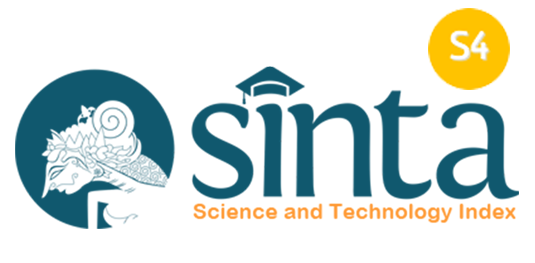Resuscitating students’ attitude toward mathematics via computer-based software package instruction
Abstract
Keywords
Full Text:
PDFReferences
Ali, H. O. (2013). Factors affecting students’ academic performance in mathematical sciences department in tertiary institutions in Nigeria. US-China Education Review, 3(12), 905–913.
Aikenhead, G. S. (2021). A 21st century culture-based mathematics for the majority of students. Philosophy of Mathematics Education Journal, 37, 1-35.
Kunwar, R. (2020). Mathematics phobia: Causes, symptoms and ways to overcome. International Journal of Creative Research Thoughts, 8(8), 818-822.
Bassey, S. W., Joshua, M. T., & Asim, A. E. (2008). Gender differences and mathematics achievement of rural senior secondary students in Cross River State, Nigeria. Proceedings of EpiSTEME, 3, 56–60.
Bhatti, N. (2019). CAI and conventional method for retention of mathematics: An experimental study. Journal of Physics: Conference Series. International Conference on Mathematics and Science Education, 1157(3).
Brown, J. H. (2008). Developing and using a computer self-efficacy scale for adults. 24th Annual Conference on Distance Teaching & Learning, 1–5.
Chand, S., Chaudhary, K., Prasad, A., & Chand, V. (2021). Perceived causes of students’ poor performance in mathematics: A case study at Ba and Tavua secondary schools. Frontiers in Applied Mathematics and Statistics, 7, 614408.
Downs, B. L. (2003). Using technology in the extended learning time mathematics class (PhD Thesis). Valdosta State University.
Elçi, A. N. (2017). Students’ Attitudes towards mathematics and the impacts of mathematics teachers’ approaches on it. Acta Didactica Napocensia, 10(2), 99–108.
Ersoy, M., & Akbulut, Y. (2014). Cognitive and affective implications of persuasive technology use on mathematics instruction. Computers & Education, 75, 253–262.
Gheith, E. M., & Aljaberi, N. M. (2015). Pre-service classroom teachers’ attitudes toward graphs and their ability to read and interpret them. International Journal of Humanities and Social Science, 5(7), 113–124.
Hashim, S., Masek, A., Mahthir, B. N. S. M., Rashid, A. H. A., & Nincarean, D. (2021). Association of interest, attitude and learning habit in mathematics learning towards enhancing students’ achievement. Indonesian Journal of Science and Technology, 6(1), 113-122.
Irvine, J. (2020). Positively influencing student engagement and attitude in mathematics through an instructional intervention using reform mathematics principles. Journal of Education and Learning, 9(2), 48–75.
Kalemoglu Varol, Y. (2014). The Relationship between attitudes of prospective physical education teachers towards education technologies and computer self-efficacy beliefs. Turkish Online Journal of Educational Technology-TOJET, 13(2), 157–167.
Kennedy, L. (2019). How Attitude Towards Math Impacts Student Achievement | Prodigy education. Retrieved September 30, 2020, from https://www.prodigygame.com/main-en/blog/attitude-towards-math/
Kunwar, R., Shrestha, B. K., & Sharma, L. (2021). Are teachers aware of mathematics learning disabilities? Reflections from basic level schoolteachers of Nepal. European Journal of Educational Research, 10(1), 367-380.
Mahanta, S., & Islam, M. (2012). Attitude of secondary students towards mathematics and its relationship to achievement in mathematics. International Journal of Computer Technology and Applications, 3(2), 713–715.
Ogunleye, B. O. (2019). Effects of concrete-representational-abstract instructional strategy on chemistry performance of students with mathematics learning difficulties in Ogun State, Nigeria. KIU Journal of Education, 14(2), 135-151.
Opolot-Okurut, C. (2005). Student attitudes towards mathematics in Ugandan secondary schools. African Journal of Research in Mathematics, Science and Technology Education, 9(2), 167–174.
Oswald, D. R. (2009). Effects of gender-based instruction on fifth graders’ attitudes toward mathematics. Walden University.
Ozden, M., Aktay, S., Yilmaz, F., & Ozdemir, D. (2007). The relation between pre-service teachers’ computer self-efficacy believes and attitudes towards internet use. International Journal of Learning, 14(6), 53-60.
Ragasa, C. Y. (2008). A comparison of computer-assisted instruction and the traditional method of teaching basic statistics. Journal of Statistics Education, 16(1), 1-10.
Shamsuddin, I. M., Aminu, I., Shamsiyya, A., & Adamu, A. M. (2017). Influence of computer assisted concept mapping instructional strategy on students performance in chemistry. Teacher Education and Curriculum Studies, 2, 86–92.
Singh, S. P., & Imam, A. (2013). Effect of personal and institutional variables on mathematics achievement of secondary school students. IOSR Journal of Humanities and Social Science, 10(3), 22–33.
Stanley, M., & Pollard, D. (2013). Relationship between knowledge, attitudes, and self-efficacy of nurses in the management of pediatric pain. Pediatric Nursing, 39(4).
Stokdyk, D. (2020). What is a degree in math and why is it important? Retrieved September 30, 2020, from https://www.snhu.edu/about-us/newsroom/2016/08/what-is-a-degree-in-math-and-why-is-it-valuable
Sure, S. (2009). Development of a tool to measure computer self-efficacy of student teachers.
Tella, A. (2013). The effect of peer tutoring and explicit instructional strategies on primary school pupils learning outcomes in mathematics. Bulgarian Journal of Science and Education Policy, 7(1), 5.
Wood, S. E., Wood, E. R. G., Boyd, D. R., Bracey-Lorenzo, K., & Lambright, L. L. (2011). Mastering the world of psychology. Allyn & Bacon Boston, MA.
Wu, Y. K., & Wong, K. Y. (2007). Exploring attitude toward statistical graphs among Singapore secondary school students. The Mathematics Educator, 10(1), 39–58.
DOI: https://doi.org/10.18860/ijtlm.v4i1.10496
Refbacks
- There are currently no refbacks.
Copyright (c) 2022 Udobia Elijah Etukudo

This work is licensed under a Creative Commons Attribution-NonCommercial-ShareAlike 4.0 International License.
Indexed by :
.png)
.jpg)
.png)

.jpg)


